TABLE OF CONTENTS
What is the difference of growing 10 pound plants vs 1 pound of weed? How can I grow ten pound plants of weed you ask?
In a perfect world, you'd be swimming in a sea of cannabis buds as far as the eye can see. In the cannabis world, growing pounds upon pounds of pure bud with a thick blanket of milky, resinous trichomes requires a lot of cannabis plants, patience, passion, and skill.
Cannabis yields vary by plant depending on their climate, growing environment, and genetics. And, with home cultivation limits, you can only grow so many plants in your home if weed is legal in your state.
Our cannabis grow guide can teach you how to legally work around these limits to grow the most amount of weed possible, which in some cases, can be up to 10 pounds or more. Get ready to significantly improve your cannabis yields!
How Many Plants Can You Grow at Home?
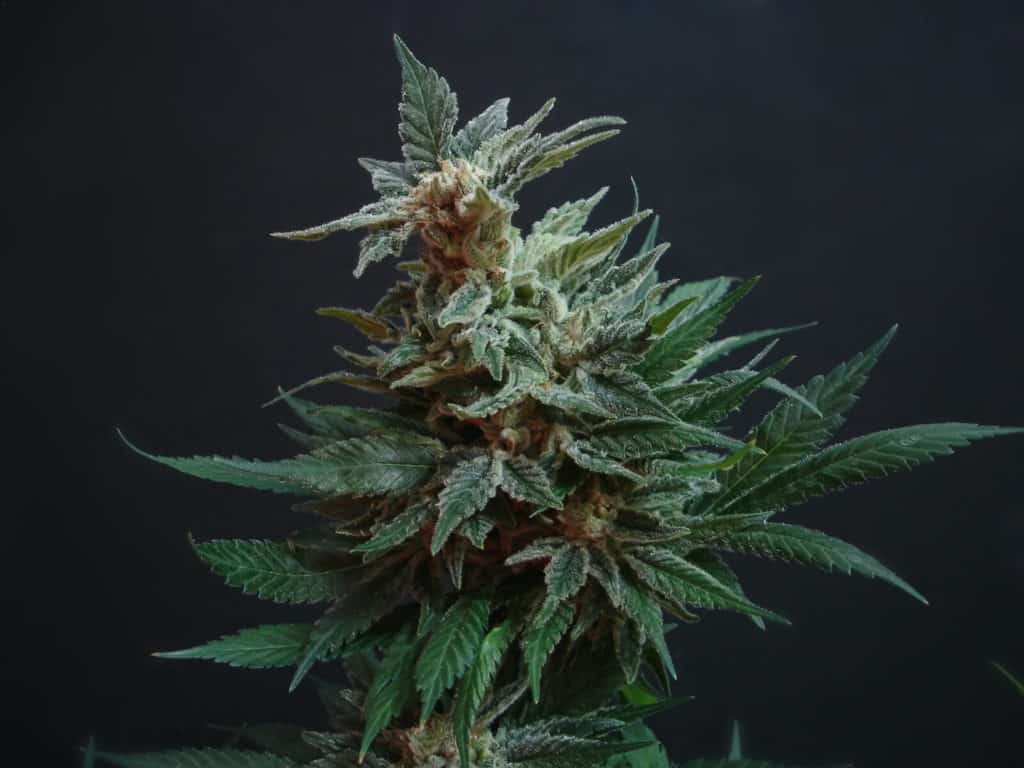
Let's start by discussing the state limits on home cultivation. In medical and recreational cannabis states, regulations place a certain limit on the number of cannabis plants that a medical patient and a recreational user are allowed to grow.
Sometimes, the home cultivation limits in a state are different for medical patients and recreational users.
In addition, some jurisdictions may completely prohibit home cannabis cultivation for medical and recreational users. Avoid growing in a jurisdiction that prohibits home cultivation because possession and cultivation are punishable by a misdemeanor or felony depending on the amounts of cannabis you are caught with, have produced, or plan to produce.
In the United States, home cultivation limits range from 2 plants to 12 plants per household or more. Generally, users are limited to growing 6 cannabis plants. Often, caregivers can have a larger cultivation limit since they are growing for multiple patients.
Before you start getting together your garden equipment and tools to grow 10-pound marijuana plants, it is important to research your state and local cannabis cultivation laws.
Cities may allow only indoor cannabis growing, which can limit the amount of weed you can grow per plant. The cities that allow outdoor cultivation may have requirements to keep your garden private and secure and not visible from public view.
In addition, certain home cultivation laws may only be allowed for patients who are too far away from a dispensary. Other regulations may require registration with the city to start growing cannabis plants.
In short, do your research before setting up your garden. It'll save you a lot of headaches and heartaches in the future with law enforcement.
How Many Pounds Can One Cannabis Plant Grow?
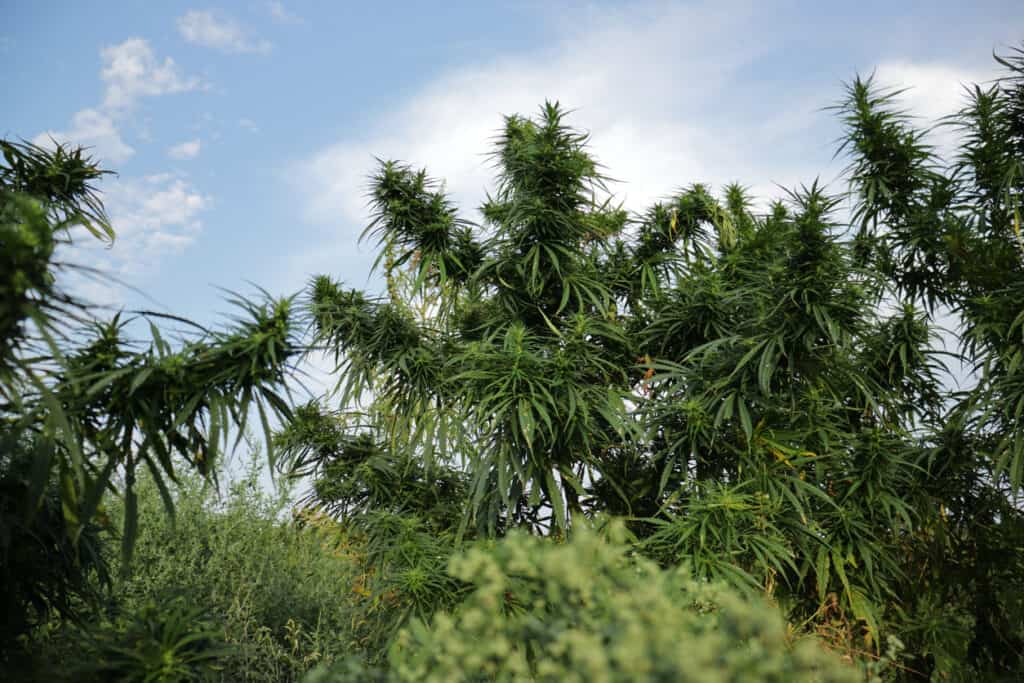
How much can a weed plant yield, in terms of pounds per plant? This is one of the most commonly asked questions by new marijuana growers. Unfortunately, the answer isn't so simple. Yields can be unpredictable and vary wildly.
Even as an experienced grower, your yield can vary. It is often hard to estimate how much your plants will yield based on looks alone. Common factors that influence the yield of your plants include:
- Light quality and footprint
- Grow medium
- Genetics
- Grow space
- Grower’s skill level
- Temperature
- Relative humidity
- Nutrients
- Insulation
- Water/moisture
- Training techniques
- Pest control
As you can see, a cannabis grower must take into account a variety of factors in the grow space. To make sure the plants are healthy throughout all stages of the growth cycle a cannabis grower will need to check on the plants everyday.
Outdoor cannabis plants produce higher yields than indoor cannabis plants do on average. Whether a beginner cannabis cultivator or a veteran, there are ways you can increase the yield of cannabis plants.
Growing ten pounds per plants is a big time achievement for any cannabis grower and usually only occurs at commercial cannabis gardens that have large enough space to grow huge cannabis plants.
As a home cannabis cultivator it takes a lot of practice to get to where you can grow 10-pound plants.
Weed plants grow on average around 1 pound per plant if grown under powerful enough lights and given the right amounts of nutrients. With more practice, any cannabis grower can see increased yields from their garden.
How Many Grams and Ounces Are In 1 Pound of Weed?
If you are going to grow many pounds of cannabis each year it is important to know some math for that much volume of cannabis. Knowing grams and ounces and other weed measurements is important when growing large amounts of cannabis.
1 pound of weed is equal to 16 ounces, or, simply put, one ounce is 1/16 of a pound.
16 ounces is equal to 448 grams of cannabis.
The most commonly used sizes for cannabis are;
-an eighth (3.5 grams)
-a quarter ( 7 grams)
-a half-ounce (14 grams)
-and one ounce (28 grams).
The best way to be accurate when measuring and weighing cannabis is to use a digital scale.
How many grams in a pound?
There are 453.592 grams in a pound.
How many grams in an ounce?
There are 28.3495 grams in an ounce.
How many grams in a half ounce?
There are 14.1748 grams in a half ounce.
How many grams in 1/4 ounce?
There are 7.0873 grams in 1/4 ounce.
How many grams in 1/8th of an ounce?
There are 3.5436 grams in an ounce.
Popular High-Yielding Strains
- Strawberry Kush
- Chocolope
- Super Silver Haze
- Big Bud
- NYC Diesel
- Super Skunk
- Amnesia Haze
- THC Bomb
- Lemon Skunk
- Mango Haze
- Blue Dream
- White Widow
- Critical Kush
- Cheese Quake
- Purple Trainwreck
If you start with the right strain genetics, you will have a better chance of an increase in your yield as long as you care for your cannabis plant throughout the growing season.
Extended Vegetative Stage
Whether you're growing indoors or outdoors to start, it is wise to allow your plant to have an extended vegetative stage where it can fully grow its stems and leaves. Ideally, you want to keep it in this veg growth stage for as long as you can. Make sure you have enough indoor space to accommodate your plant growth.
When the artificial lighting or natural lighting gets shorter down to 12 hours of daylight and 12 hours of darkness, photoperiod plants are triggered to begin the flowering stage to form their bud.
In this stage where it is forming its buds, a plant can nearly double its size. If you grew a big vegetative plant, expect to reap a monster yield during your harvest.
Growing Ten Pound Plants of Cannabis
You can grow huge buds, you can grow ten pound cannabis plants a lot easier outdoors than indoors. Indoors you would need very tall ceilings to accommodate the cannabis plants. Keep in mind the plants will double in size and height from when you switch them from the vegetative stage to the flowering stage indoors.
Huge buds are usually grown outdoors that have no ceiling and can grow up to 10 or 12 feet high!
If you happen to have a grow space indoors with super high ceilings you could grow ten pound plants indoors but most home cannabis growers do not have the ceiling height.
How Many Pounds Can One Plant Yield?
How much cannabis can come from one pot plant? The average amount is:
1/2 pound (224 grams) of weed from outdoor growing.
But there are ways to increase these yields for sure!
How Do You Get Large Yields of Cannabis?
The most important factors to getting large yields when growing canabis are: light, plant density, fertilizer used, temperature, how long the plants are kept in the vegetative phase, the length of the flowering growth stage, and plant variety.
Some strains of weed are genetically built to grow bigger buds and more of them!
Check out this article on high yielding pot strains for bigger yields.
Cannabis Pot Size
Generally, the larger the growing space for the roots, the larger your plants will grow. Because of this, the larger the container size the better off your plant will be. Generally, marijuana growers use pots between 3 and 5 gallons in size.
Your growing space and container may be limited by the amount of growing space you have indoors or outdoors. Use the largest container possible for your space and keep moving your plants into bigger pots if needed to accommodate the root growth.
In a small container, your cannabis plant roots can be limited and when they fill up the space, they can become root bound.
Most importantly, you want a pot that has proper drainage. Growing weed in bigger containers means you will need to ensure you are properly watering your plants without over or under-watering.
One of the biggest disadvantages of growing in large containers is that you cannot easily move the plants around.
In fact, some growers that use Smart Pots hundreds of gallons in size may need a forklift to move around this huge plant and its container.
Now that you know how to grow a marijuana plant from a seed, you can experiment with different strains and make a variety of infused products including edibles, topicals, and extracts. Learn to grow like a pro by enrolling in CTU and earn your online cannabis certification in as little as a few weeks.
What is required to grow a ten-pound weed plant?
To grow a ten pound cannabis plant you will need the right light, the right growing medium, great plant genetics, soil that is rich in nutrients, a good watering schedule, and to be able to maintain the climate in the grow environment. Make sure to use strains that are high yielding.
How important are genetics when growing big cannabis plants?
Genetics are very important whether growing small or large cannabis plants.
“
There are over 300,000 jobs in the cannabis industry. CTU trained me for one of them!

Makes $24.50 @ THC +
What type of lighting is best for growing big weed plants?
The most commonly used lights for growing large cannabis plants are either high intensity discharge lights (HID), or metal halide (MH) lights. In recent years LED lights have improved greatly and can be used to grow large cannabis plants as well.
How much space is needed for a ten-pound cannabis plant?
Growing big cannabis plants requires a lot of space. A ten-pound cannabis plant may need 50–100 square feet of growing space.
What should I use to fertilize high-yield cannabis plants?
Large cannabis plants will need fertilizers with phosphorus, nitrogen, and potassium As well as micronutrients. The fertilizing schedule will change for the different stages of plant growth.
Does pruning and training of cannabis plants help?
Topping, fimming, and low-stress training (LST) can help manage the size of the plants as well as produce increased yields.
How do I control the climate for indoor cannabis plants?
The best temperatures for growing weed indoors are between 72-85 degrees Fahrenheit. The humidity should be higher during the vegetative growth phase and then lowered during flowering.
What is the average flowering time for large cannabis plants?
Flowering of cannabis plants usually takes 8–12 weeks, depending on the strain. The larger the plant, the longer the flowering phase generally.
How do I know when to harvest for the best yield of cannabis?
If you look closely at the buds with a magnifying glass, when the trichomes on the buds are hazy and amber in color, it is the ideal time to harvest.
Marijuana Grow School
Learn how to grow cannabis online and start a new career as a marijuana grower today!
Grow ten pound plants with online training from the world's leading cannabis college.

Luis Cordova
Luis Cordova is a distinguished author, and renowned expert in cannabis cultivation, who possesses a Master's degree in Plant Biotechnology and Pharmaceutical Science. As a valued contributor to highly esteemed publications such as Cannabis Training University and Maximum Yield Magazine, Luis has emerged as a trusted source of guidance and knowledge in the cannabis industry. Having written thousands of informative articles, Luis is widely recognized for his comprehensive expertise on cultivating cannabis, both indoors and outdoors.


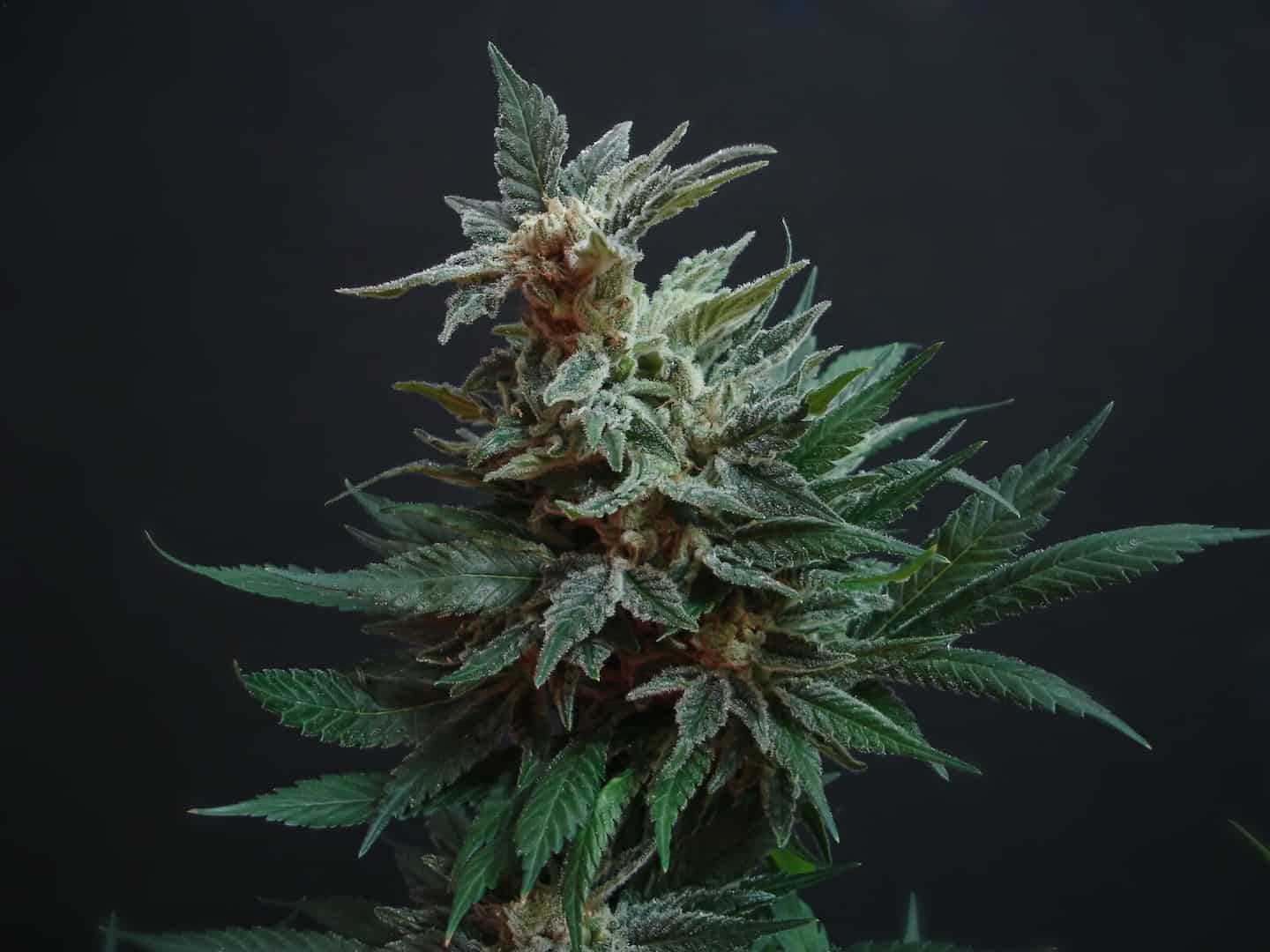
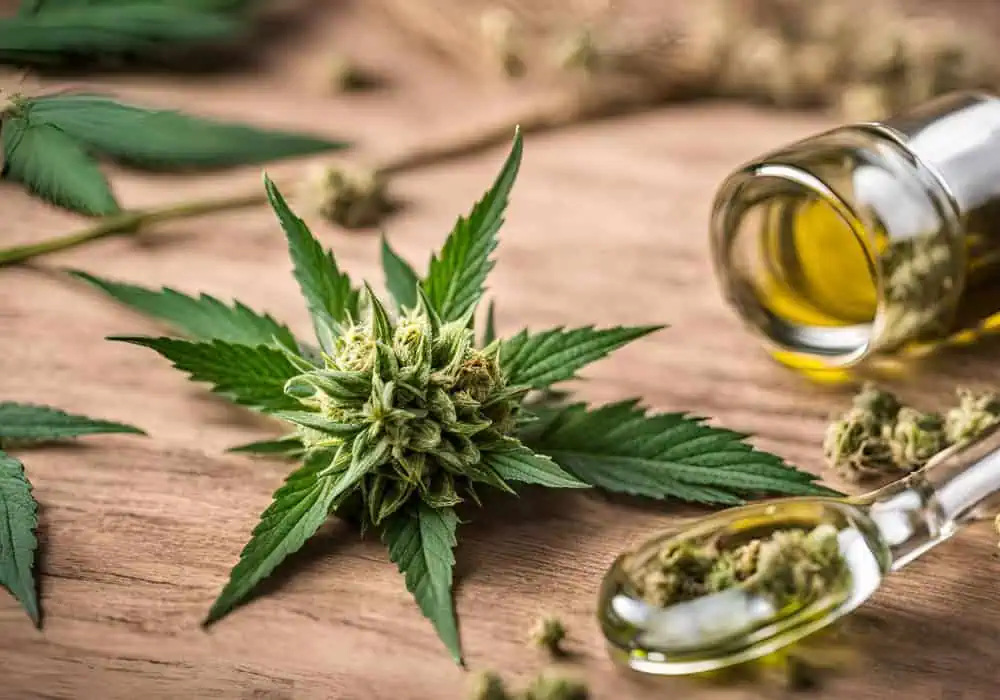


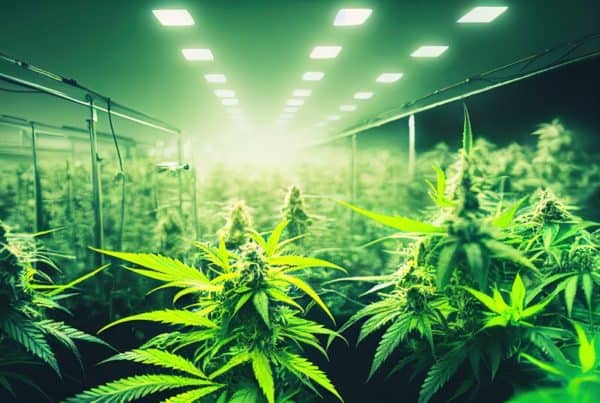
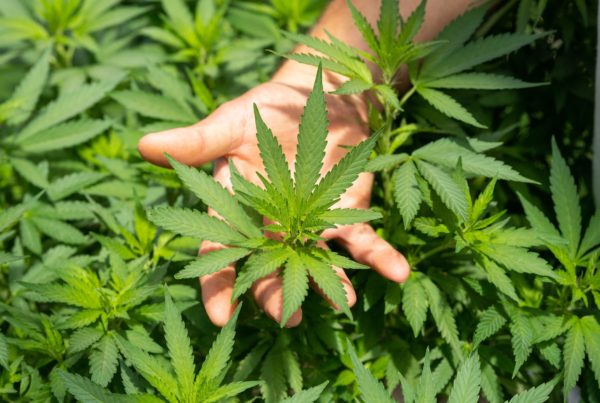
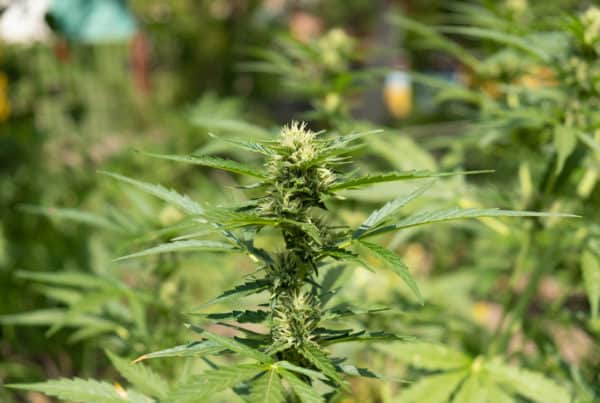



 Jeff was involved in an accident where he endured a traumatic brain injury. He had a week-long stay in ICU where brain surgeons
Jeff was involved in an accident where he endured a traumatic brain injury. He had a week-long stay in ICU where brain surgeons  100% risk free money back guarantee within 48 hours after purchase if student has not completed any of the courses or exams.
100% risk free money back guarantee within 48 hours after purchase if student has not completed any of the courses or exams.